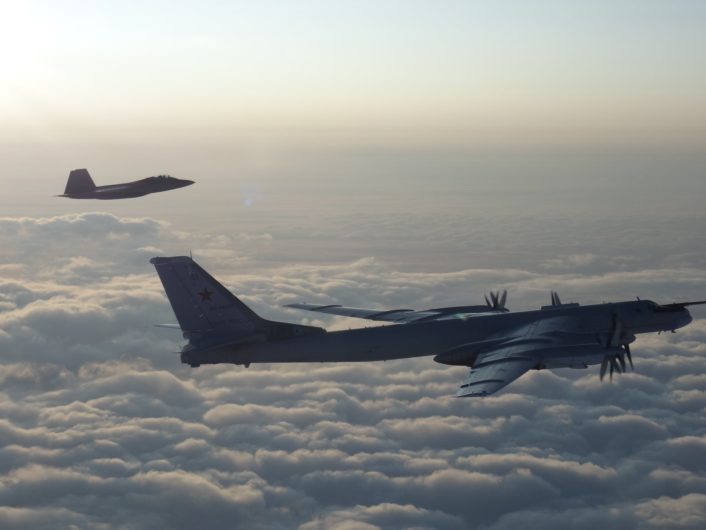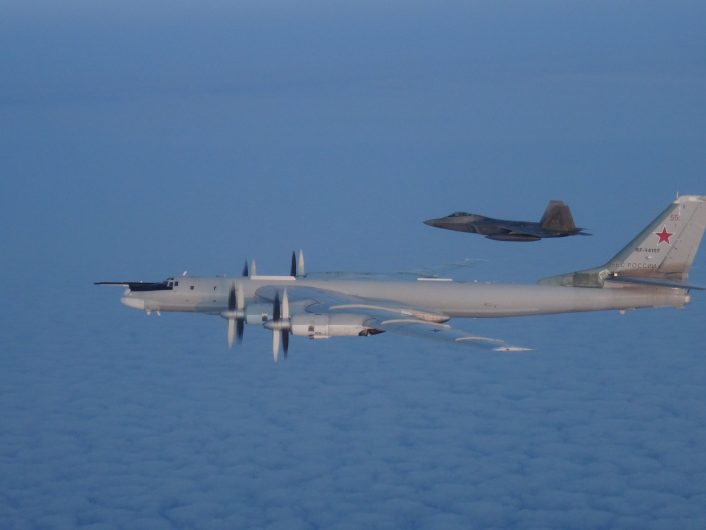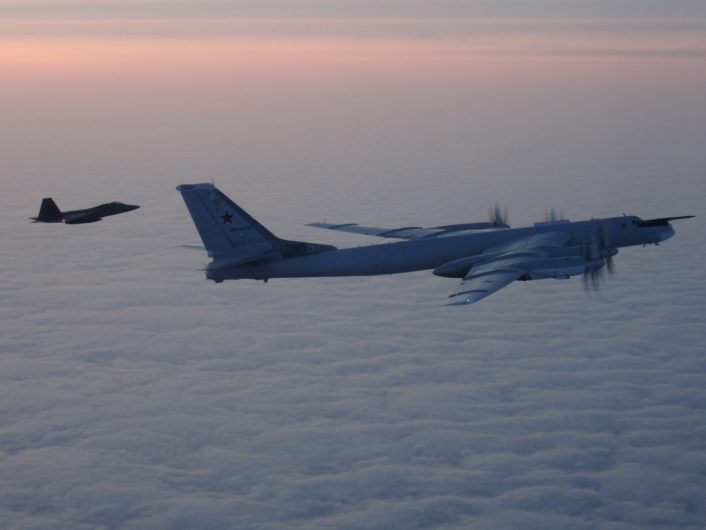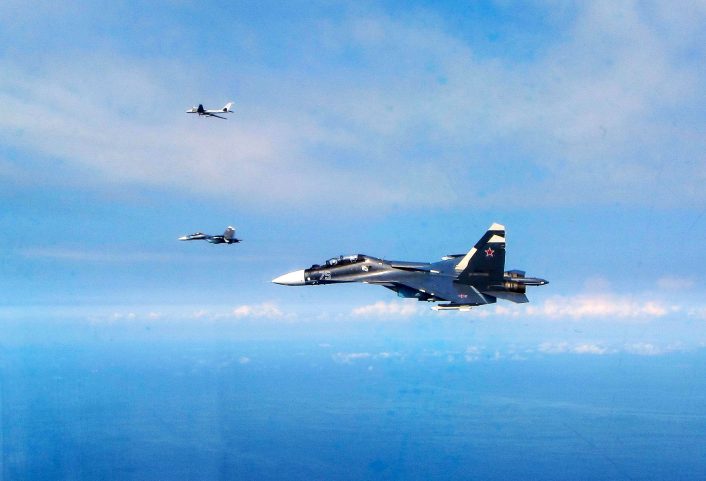Significant Intercepts in International Airspace Produces Remarkable Photos.
In a dramatic aerial intercept reminiscent of the Cold War, a pair of USAF F-22 Raptors, two Canadian Forces CF-18s, a USAF E-3 Sentry AWACS supported by a USAF KC-135 Stratotanker and C-130 tanker under NORAD control intercepted two Russian Tu-95 Bear H bombers over the arctic Beaufort Sea’s international air space on Thursday, Aug. 8, 2019. The intercept happened early Thursday north of the Alaskan and Canadian coasts.
The F-22s involved in the intercept wore the “AK” tail code of the 477th Fighter Group at Joint Base Elmendorf-Richardson, the very first Air Force Reserve Command F-22 Raptor unit. The likely squadron involved in the intercept was the 302nd Fighter Squadron.
The encounter produced some dramatic photos from crews, likely on both sides. These exciting photos from U.S. and Canadian flight crews were shared on social media only hours after the successful intercept. It’s likely we’ll begin seeing photos taken from the Russian Bear Hs in a few more hours.

(Photo: NORAD via Facebook)
The ADIZ, or “Air Defense Identification Zone”, where the intercept occurred is international airspace that extends 200 miles from the U.S./Canadian coastline and is monitored in the interest of national security. U.S. territorial airspace begins only 12 miles from the coastline. Russian aircraft stayed well clear of the 12-mile U.S. air space limit during the encounter between the three countries.
A week ago, radar surveillance showed that two Russian aircraft had also entered the ADIZ off Alaska and Canada, but these aircraft were not intercepted by U.S. or Canadian forces. The last encounter between U.S./Canadian aircraft and Russian aircraft in the region happened back in May, when Russian aircraft entered the ADIZ over two consecutive days.

While the specific reasons for the intercepts are unknown, aircraft sometimes fly near international borders to collect data about a country’s air defense network and to collect mapping and signals intelligence to build a communications and early warning “Order of Battle” so that radio and radar frequencies can be identified and cataloged for future use. The missions may happen periodically as the electronic order of battle is changed frequently to maintain operational security. Russia has flown these missions, whether they are training sorties, ELINT (ELectronic INTelligence) gathering missions or something else, two or three times a year during the past few years. Depending on the weather and time of day, the intercepts, when and if they happen, can produce incredible photos and video. The United States also conducts similar surveillance missions close to Russian open air space areas for likely related reasons.

In a boilerplate official statement about the intercept, NORAD Commander Gen. Terrence O’Shaughnessy said, “NORAD’s top priority is defending Canada and the United States. NORAD operators identified and intercepted the Russian aircraft flying near our nations.” Gen O’Shaughnessy went on to say, “Whether responding to violators of restricted airspace domestically or identifying and intercepting foreign military aircraft, NORAD is on alert 24 hours a day, seven days a week, 365 days a year.”
On Aug. 8, Russian activity has also taken place in international airspace near UK and the Baltic Sea.
In two separate locations today @RoyalAirForce Typhoons were scrambled to intercept Russian aircraft. Read more here: https://t.co/ld0dgdTit4 pic.twitter.com/ISKiWQ67jn
— Ministry of Defence 🇬🇧 (@DefenceHQ) August 8, 2019
RAF Typhoons in Quick Reaction Alert (QRA) scrambled from RAF Lossiemouth, with an RAF Voyager from RAF Brize Norton, to monitor two Russian Tu-142 ASW (Anti-Submarine Warfare) aircraft approaching UK airspace.
Typhoons deployed on NATO Baltic Air Policing also scrambled from Amari airbase to intercept a Tu-142 and two Su-30 Flanker fighter aircraft flying close to Estonian airspace.
“We were scrambled to intercept a Russian TU-142 aircraft, routing west close to Estonian airspace. We then handed over the escort to our Finish and Swedish partners, as the aircraft continued West. We were then tasked to re-intercept and escort the TU-142 ‘Bear’ which has since been joined by two SU-30 ‘Flanker’’. These Russian aircraft transiting the Baltic region were not on a recognised flight plan or communicating with Air Traffic Control. The intercept was uneventful and conducted in a professional manner throughout,” said a Typhoon pilot from XI(Fighter) Squadron, attached to 121 Expeditionary Air Wing (EAW) in a public statement published by the UK MOD.

Previously, RAF Typhoons had intercepted five Russian military aircraft (including another Tu-142) between Aug. 5 and 6.
RAF Typhoons have intercepted 5 Russian military aircraft in the last 2 days after launching yesterday and today, in support of @NATO Baltic Air Policing. #SecuringTheSkies #WeAreNATO
Full story: https://t.co/LzNqFlTclC pic.twitter.com/OpcaWVi78I
— Royal Air Force (@RoyalAirForce) August 6, 2019








